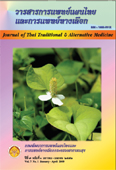Green Roofs and Global Warming
Main Article Content
Abstract
The built environment, which includes buildings, accounts for approximately 40 percent of the total
carbon dioxide (CO2) emitted as a result of human activity; transport, agriculture and industry combined
account for the rest. Reducing energy consumption in buildings thus becomes significant. Heat transfer
through building envelopes, including through roofs, accounts for 60 percent of electricity consumed by airconditioning
systems. The natural insulation afforded by green roofs is one of the most efficient ways to curb
roof thermal transfer value (OTTV) and keep such values below 25 Watts/m2, as stipulated under the building
code limits in many countries, including Thailand. The benefits of green roofs are several, including storm/
flood mitigation in urban areas, reducing urban heat-island effects, increasing urban ecology and wildlife
habitats, increasing usable roof areas as well as aesthetic values. Green roofs have been used to conserve heat
in buildings in Scandinavia for centuries and they have gained momentum in European countries, particularly
in Germany and more recently in the United States, in order to combat the effects of global warming.
Thailand has had intensive green roofs built over commercial buildings for more than three decades but not
directly for reducing CO2 emissions. Intensive research is required to find local hardy plants that would be
most suitable and require the least maintenances in a country like Thailand, which is situated in a hot and
humid region. Generally, green roofs are classified according to three degrees of maintenance: intensive,
semi-intensive and extensive which requires the least care.


